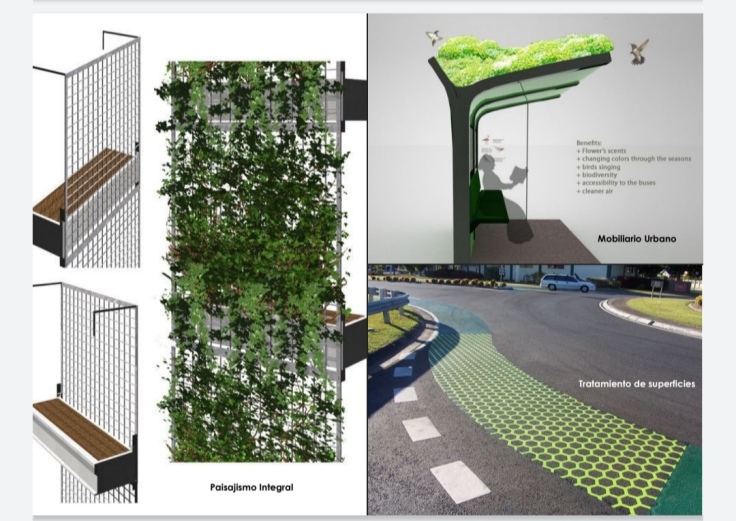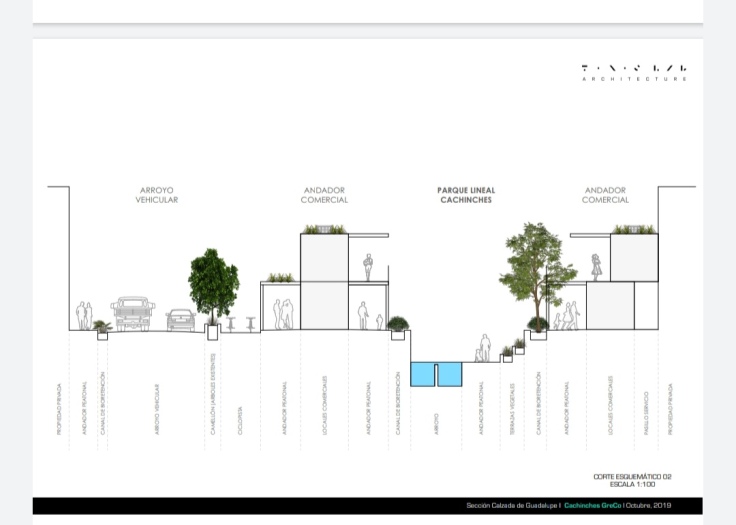
San Miguel de Allende [translation] - On Wednesday, a group of professionals presented an alternative project that had been presented to the municipal government for their consideration on respecting the trees, however it can still be adapted to current conditions.
The linear park “Cachinches” was presented by Toniclab Arquitectura in collaboration with Engineer Arturo Morales Tirado, Architect Alejandro Castro and Architect Carlos Bautista Rodríguez.
They propose an inclusive, systemic and holistic project that includes the restoration of the channel and the creation of a park lining the Cachinches Creek, from the Obraje Dam to the Allende Dam, at different stages and in accordance with the 17 millennium objectives (SDG )
The trees that were along Guadalupe Avenue were integrated into the sustainable architectural urban ecological project, along with plans to increase the presence of plant species by means of conservation or increased environmental services.

The project details the removal of the slabs of reinforced concrete that are currently along the creek in order to recover and restore the river, the area would be redesigned on two separate levels--the street and the stream.
Pedestrian, cyclist and the urban transport are prioritized, as indicated by the mobility pyramid.
 Current situation of the Cachinches creek.
Current situation of the Cachinches creek.
The design is based on constant interaction with water, helping to create an awareness about its use and care.
Its construction is environmentally friendly, using sustainable extraction materials and allowing the permeability of rainwater.
The project was presented in a timely manner to Mr. Francisco Correa, so far however, no response has been provided by the authorities.
The professionals point out this project has great benefits such as:
- The creation of a new public space developed with international avant-garde and quality practices for the entire population.
- The conservation of existing environmental services, which are irreplaceable.
- The generation of new environmental services.
- The restoration of the riverine ecosystem and with it the terrestrial and aquatic biomes.
- The increase in the value of land on the riverbank and eventually in surrounding areas.
- The visual improvement of the area
- The improvement in air and water quality
- The considerable improvement in security issues.
This project sets a precedent in the collaboration between citizens and government towards a climate of peace, guarantor of citizen rights of participation in the political and economic life of their environment.
